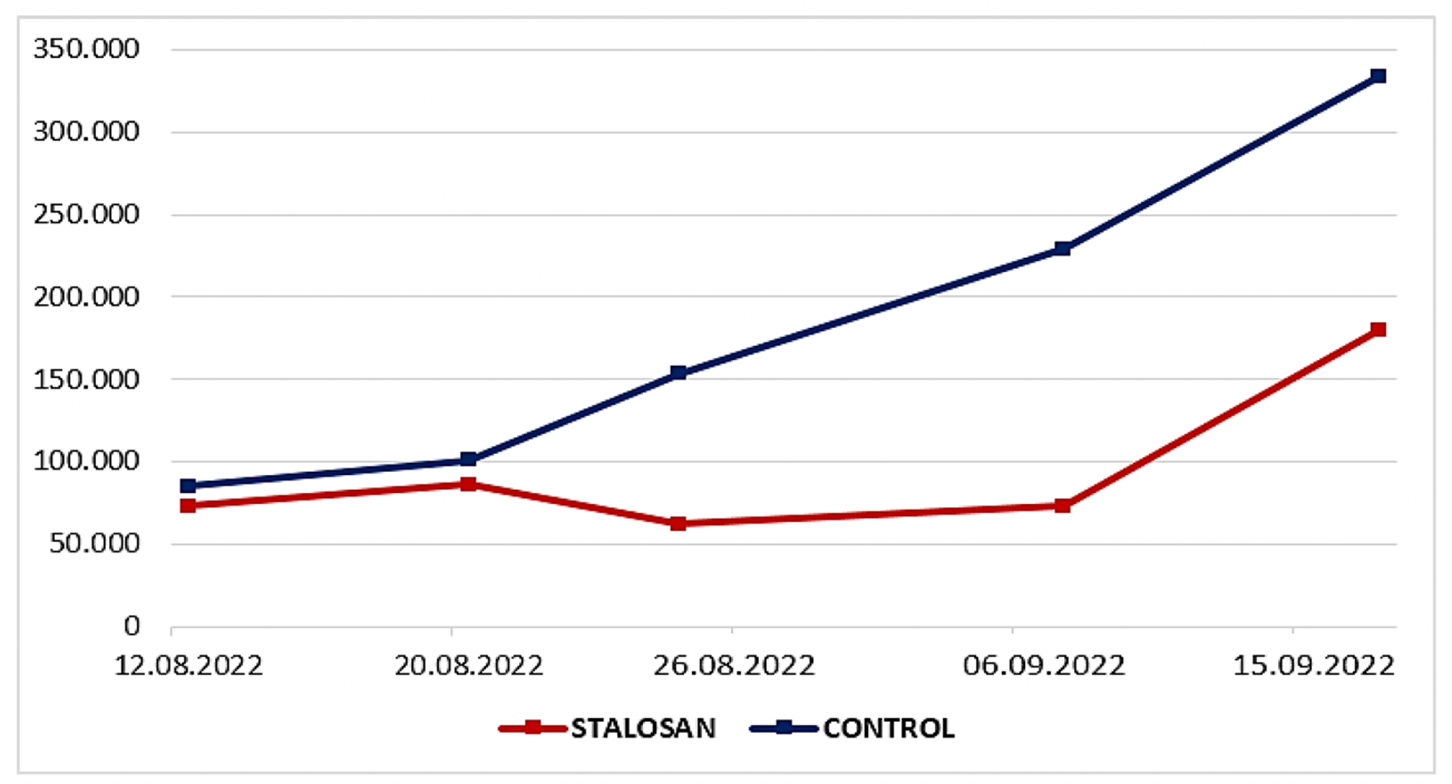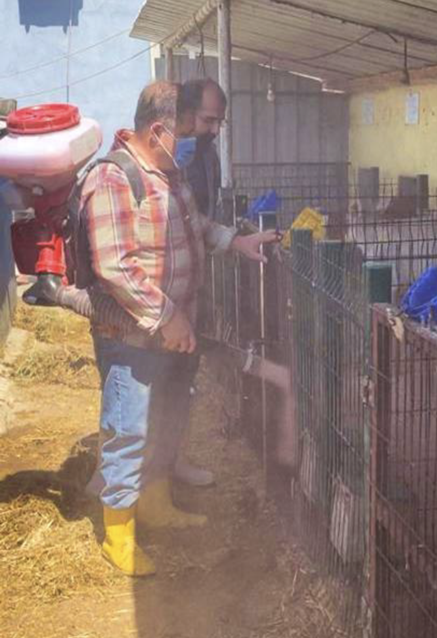Stalosan F shows promising results: reduces high somatic cell count and calf diarrhoea
A new study shows that Stalosan F can reduce Somatic cell count by almost 50% and calf diarrhoea by more than 50%. Also, it was shown that Stalosan eradicated all Cryptosporidium in the calves.
The trial was done by Prof. Dr. Erkan Gönülol and Asst. Prof. Eray Aktug, Turkey.
Dairy cow trial
Mastitis remains the most serious and challenging disease in dairy cows, resulting in significant negative economic impact. Adverse economic consequences of clinical or subclinical mastitis include reduced milk production and lower price of milk with high SCC, increased culling rate and higher veterinary treatment costs, which can be up to 185 EUR/cow (Dubuc et al., 2011). Turk et al. (Turk, 2017) has shown that 23% of cows that leave the herd too early are culled due to udder health problems.
Reducing the SCC will improve milk production and quality. There are several management practices that can be implemented to reduce SCC, such as increasing cow comfort, improving nutrition, and providing clean and dry bedding. In this study, the focus was on disinfecting cow cubicles.
Tunali dairy farm, Turkey
| No. of milking cows | 240 |

Stalosan F was applied once a week with a blower in doses of 50 g per cow cubicle. Somatic cell count was measured regularly. See below for level of SCC in the control and Stalosan F treated group. The Stalosan F treated group had a significantly lower level of SCC compared to control.
| Control | Stalosan F | |
| Average SCC | 180.400 | 94.800 |

Calf trial
Calf diarrhoea is a well-known worldwide phenomenon that causes significant financial losses in the farm industry due to high morbidity, mortality, growth retardation and treatment costs, as well as long-term serious consequences such as delayed first calving. Calf diarrhoea is the most common cause of death in dairy calves at the first 30 days of age, with a case-fatality risk of approximately 5% (Brunauer, Roch and Conrady, 2021).
A study showed that hydrated lime delayed the onset of diarrhoea but did not affect the incidence or duration of Cryptosporidium-associated diarrhoea (Björkman et al., 2018). In the study here, it was observed that Stalosan F reduced the incidence of diarrhoea by half compared to the control group.
| No. of milking cows | 600 |
| Calves in Stalosan F group | 116 |
| Calves in control group | 74 |

Stalosan F was applied once a week with a blower in doses of 50 g per calf box. Microorganism detection was done in the faeces with the rapid test kit (Is-kit 4). See below for the test results. The calves in the Stalosan F treated group had less than half the cases of diarrhoea compared to the control group. Both Cryptosporidium and Rotavirus was eradicated, but some cases of E.coli were still alive. Stalosan F can also control E.coli, but most likely this demands a higher application rate.
| Sick calves control | Results | Sick calves Stalosan F | Results |
| TR391251658 | E.coli K99 | TR391251609 | E.coli K99 |
| TR391251663 | Rotavirus, Cryptosporidium | TR391251612 | E.coli K99 |
| TR391251670 | E.coli K99 | TR391251614 | E.coli K99 |
| TR391251673 | E.coli K99 | TR391251620 | E.coli K99 |
| TR391252225 | Cryptosporidium | ||
| TR391251566 | E.coli K99 | ||
| TR1251743 | Cryptosporidium | ||
| TR1251727 | E.coli K99 | ||
| TR51738 | E.coli K99 |

